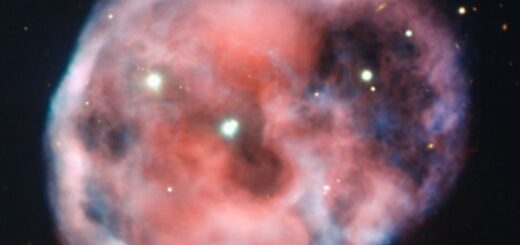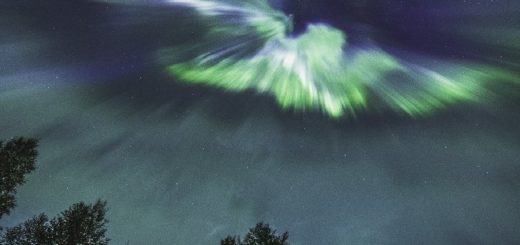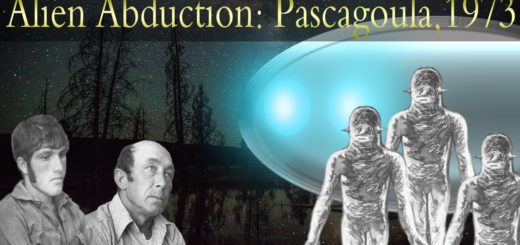The Roswell UFO Crash

“Roswell,” the very mention of the word brings images of a crashed UFO, aliens, government cover-up, autopsies, hidden debris, guarded charred bodies, and weather balloons. In the history of UFO reports, no case has received the world-wide attention as the Roswell event of 1947. Not only did the alleged crash of a flying saucer create mass coverage at the time of the event, but remains today as an often discussed case by which all other cases are judged.
So many books and articles have been written about Roswell, it is not an easy task to write another, but I feel that no UFO enthusiast cannot include it among his comments. The Roswell event is the cornerstone of UFO research. The case offers everything one could imagine; a crash of some flying craft, direct, hands on testimony of witnesses who handled crash debris, government cover-up and secrecy, and most of all a list of participants which is generally listed at around 500 first and secondhand testimonials.
Ironically, the alleged crash story originally died as quickly as it began. It would be many years before UFO researchers refueled the fire behind its enormous potential. Most all of us are familiar with the famous Roswell headline stating that the Army had captured a “flying saucer,” and then the retraction a few hours later, substituting a balloon for the crashed saucer.
At the time of the original event, a sense of naivety and trust gave birth to a rapid, quiet acceptance of the retraction, and there the event died. But, fortunately, it was resurrected in 1976, and has kept pace with all other events of the last 50+ years. It would be January 1976, when ufologists William Moore, and Stanton R. Friedman were mulling over some interview notes from two witnesses whom Friedman had met with. A man and a woman, who both had knowledge of a crashed saucer in July 1947 in Corona, New Mexico were the key witnesses.
A retired Air Force officer, Major Jesse A. Marcel asserted that he had first hand involvement in the crash debris, and the Air Force cover-up. The woman was Lydia Sleppy, who had been employed at an Albuquerque radio station KOAT. She claimed that the military had covered-up the story of a crashed saucer, and the bodies of “little men,” who were aboard the craft. She also claimed that the Air Force had literally stopped the sending of a teletype news report of the incident.
The USA Military had announced to the world that it had captured a flying saucer on a remote ranch in Corona, and then about four hours later corrected the story, saying that what was found was just a weather balloon with a radar reflector kite. We have two stories. Which one is the truth?
Though subsequent confirmations of the balloon theory continue, as long as we have firsthand witnesses who defy this explanation, the investigation must continue. Of all of the explanations given to Project Bluebook, it is quite strange that the Roswell story was never mentioned. The story that died so quickly was rarely mentioned from the beginning, the only one, to my knowledge, was in a mid-1950’s lecture by UFO enthusiast Frank Edward. It seems that from the beginning, a grass roots group of believers would perpetuate this grandstory. When we solve the puzzle of the many UFO reports, it will be due to this grass roots movement. The truth is hard to kill.
It would be June 24, 1947, when the term, “flying saucer” was coined by pilot Kenneth Arnold. He used this term to describe UFOs flying over Mr. Ranier, and only a couple of weeks later, the phrase was used by the Air Force to explain what had been found in Corona, New Mexico.
The alleged crash debris was flown to Eight Army Air Force Headquarters in Ft. Worth, Texas, and somehow between the time that Jesse Marcel Sr. had handled the “other worldly” material and its arrival in Ft. Worth, the strange material had lost its luster, and became just a weather balloon. The Air Force had effectively murdered the eye witness accounts, and made fools of all who were involved. Marcel would categorically state that the debris he held in his hands, and showed to his family, was not the same material shown in photos of the “balloon wreckage.”
What happened to the saucer debris? An uncertified, but controversial document might provide an answer. Supposedly a brief prepared for then President-elect Dwight D. Eisenhower, this document was authored on November 18, 1952. It asserts that on September 24, 1947, President Harry S. Truman ordered the genesis of the highly top-secret “Operation Majestic-12,” to study the remains of the Roswell crash.
These papers would arrive in a plain manilla envelope, postmarked Albuquerque, in the post of Los Angeles television producer Jaime Shandera in December 1984. In the early part of 1987, another copy was given to Timothy Good, a British ufologist. Good released it to the British press in May.
These documents caused quite a stir, but their authenticity cannot be established beyond doubt. The jury is still out on the MJ-12 papers, but many ufologists view it as a hoax. The issue itself is not insurmountable, however, as a huge amount of evidence still remains to establish the Roswell crash as a reality.
The Roswell saga actually began in Silver City, New Mexico on June 25. Dr. R. F. Sensenbaugher, a dentist, reported sighting a saucer-shaped UFO fly over, that was about one-half the size of the full moon. Two days later, in Pope, New Mexico, W. C. Dobbs reported a white, glowing object flying overhead, not too far from the White Sands missile range. On the same day, Captain E. B. Detchmendy reported to his commanding officer that he saw a white, glowing UFO pass over the missile range.
Two days later, on June 29, Rocket expert C. J. Zohn and three of his technicians, who were stationed at White Sands, watched a giant silver disc moving northward over the desert. On July 2, a UFO was tracked at three separate installations; Alamogordo, White Sands, and Roswell. In Roswell, on the same day, Mr. and Mrs. Dan Wilmot saw a UFO. They report its appearance as “two inverted saucers faced mouth to mouth,” moving at a high rate of speed over their house. Enter rancher Mac Brazel.
 The events of Roswell began on either July 2 or July 4 (there is some disagreement here). A throwback to western days, William W. “Mac” Brazel, a sheep rancher, would etch his name forever into UFO history, a designation that he neither desired, nor appreciated. A common working man, Brazel was foreman of the Foster Ranch in Lincoln County, near Corona, New Mexico. Brazel was a family man, but his wife and children lived in Tularosa, near Alamogordo.
The events of Roswell began on either July 2 or July 4 (there is some disagreement here). A throwback to western days, William W. “Mac” Brazel, a sheep rancher, would etch his name forever into UFO history, a designation that he neither desired, nor appreciated. A common working man, Brazel was foreman of the Foster Ranch in Lincoln County, near Corona, New Mexico. Brazel was a family man, but his wife and children lived in Tularosa, near Alamogordo.
The reason for this arrangement was so his children could attend better schools than they would at Corona. Brazel stayed in an older house on the ranch, where he tended sheep, and the general chores of the ranch. He was a simple man, content with his job, family, and his life. Mac would be thrust into the limelight for a brief period of time, and ultimately regret ever reporting what he was about to discover on the range of the Foster Ranch.
An evening thunderstorm was raging at the close of another workday; the storm was highlighted by numerous bolts of lightning. These summer storms were not uncommon for these parts, but this evening Mac noticed something different… a sound, like an explosion mingled with the typical sounds of a storm.
Two of Mac’s children were staying with him that night at his farm house. Mac retired with the children, and temporarily forgot about the sounds of that night. The next day’s sun brought Mac out again to ride the fences, and check on his sheep. He was accompanied that day with a seven-year-old neighbor boy, William D. “Dee” Proctor, who often rode with Mac.
As they rode into the open field, ahead of them they noticed an area about a quarter of a mile long and several hundred feet wide, covered with debris of some type. The debris was composed of small pieces of a shiny, metallic material, a material that Mac had never seen before. The sheep would not cross the fragmented pieces, and they had to be taken the long way around that day. Because of the curious nature of the debris, Mac picked up some of it and carried it back to store in a shed. Little did he know the significance of his find.
One of his children, Bessie Brazel recalled: “There was what appeared to be pieces of heavily waxed paper and a sort of aluminum-like foil. Some of these pieces had something like numbers and lettering on them, but there were no words you were able to make out. Some of the metal-foil pieces had a sort of tape stuck to them, and when these were held to the light they showed what looked like pastel flowers or designs. Even though the stuff looked like tape it could not be peeled off or removed at all.”
“[The writing] looked like numbers mostly, at least I assumed them to be numbers. They were written out like you would write numbers in columns to do an addition problem. But they didn’t look like the numbers we use at all. What gave me the idea they were numbers, I guess, was the way they were all ranged out in columns.”
“No, it was definitely not a balloon. We had seen weather balloons quite a lot, both on the ground and in the air. We had even found a couple of Japanese-style balloons that had come down in the area once. We had also picked up a couple of those thin rubber weather balloons with instrument packages. This was nothing like that. I have never seen anything resembling this sort of thing before,- or since…”
Later that afternoon, Mac took young Dee Proctor back home, a journey of about 10 miles. He took along a piece of the debris that he had found, and showed it to Dee’s parents, Floyd, and Loretta. Mac tried to get the Proctors to go back with him, and look at the strange material strewn in the fields.
Floyd Proctor would later state: “[He said] it wasn’t paper because he couldn’t cut it with his knife, and the metal was different from anything he had ever seen. He said the designs looked like the kind of stuff you would find on firecracker wrappers…some sort of figures all done up in pastels, but not writing like we would do it.”
Loretta Proctor remembered: “The piece he brought looked like a kind of tan, light-brown plastic…it was very lightweight, like balsa wood. It wasn’t a large piece, maybe about four inches long, maybe just larger than a pencil.”
“We cut on it with a knife and would hold a match on it, and it wouldn’t burn. We knew it wasn’t wood. It was smooth like plastic, it didn’t have real sharp corners, kind of like a dowel stick. Kind of dark tan. It didn’t have any grain…just smooth.”
“We should have gone [to look at the debris field], but gas and tires were expensive then. We had our own chores, and it would have been twenty miles.”
 The first hint that the debris could be “not of this world” would come the next night from Mac’s uncle, Hollis Wilson. Mac told Hollis about his find, and Hollis urged Mac to report the findings, since there had been reports of “flying saucers” in the area as of late. On July 6, Mac was going to Roswell to strike up a deal for a new pickup truck. He took along some of the debris, and stopped off at the Chaves County Sheriff’s Office and spoke to George Wilcox.
The first hint that the debris could be “not of this world” would come the next night from Mac’s uncle, Hollis Wilson. Mac told Hollis about his find, and Hollis urged Mac to report the findings, since there had been reports of “flying saucers” in the area as of late. On July 6, Mac was going to Roswell to strike up a deal for a new pickup truck. He took along some of the debris, and stopped off at the Chaves County Sheriff’s Office and spoke to George Wilcox.
The story of the find was not significant to Wilcox until he actually handled a piece of the silvery material. Wilcox telephoned the Roswell Army Air Field, and spoke to one Major Jesse A. Marcel, who was the base intelligence officer. Marcel told the Sheriff he would come into Roswell and talk to Brazel about his find. Word of the goings on began to spread rapidly in the community, and soon Mac was talking to radio station KGFL about the incident. Mac told the station what he knew over the telephone.
Marcel and Brazel met at the Sheriff’s office. Mac told Marcel what he knew, and showed him a piece of debris. Marcel reported the results of his interview to Colonel William H. Blanchard back at Roswell Army Base. A decision was made for Brazel to go out to the site, and investigate for himself. Marcel would take his old Buick, and Army Counter Intelligence Corps officer Sheridan Cavitt accompanied him in a Jeep all-terrain vehicle.
Following Marcel back to the ranch, it was too late that day to visit the site, so they all three stayed in Mac’s ranch house. After a dinner of beans, the three headed to the site the next morning. After a brief look around, Mac left Marcel and Cavitt, returning to his chores.



 Creators of mankind
Creators of mankind Description of “Tall white aliens”
Description of “Tall white aliens” Where they came from?
Where they came from? About hostile civilizations
About hostile civilizations The war for the Earth
The war for the Earth “Tall white aliens” about eternal life
“Tall white aliens” about eternal life Video: “Nordic aliens”
Video: “Nordic aliens” Aliens
Aliens Alien encounters
Alien encounters The aliens base
The aliens base UFO
UFO Technology UFO
Technology UFO Underground civilization
Underground civilization Ancient alien artifacts
Ancient alien artifacts Military and UFO
Military and UFO Mysteries and hypotheses
Mysteries and hypotheses Scientific facts
Scientific facts


















